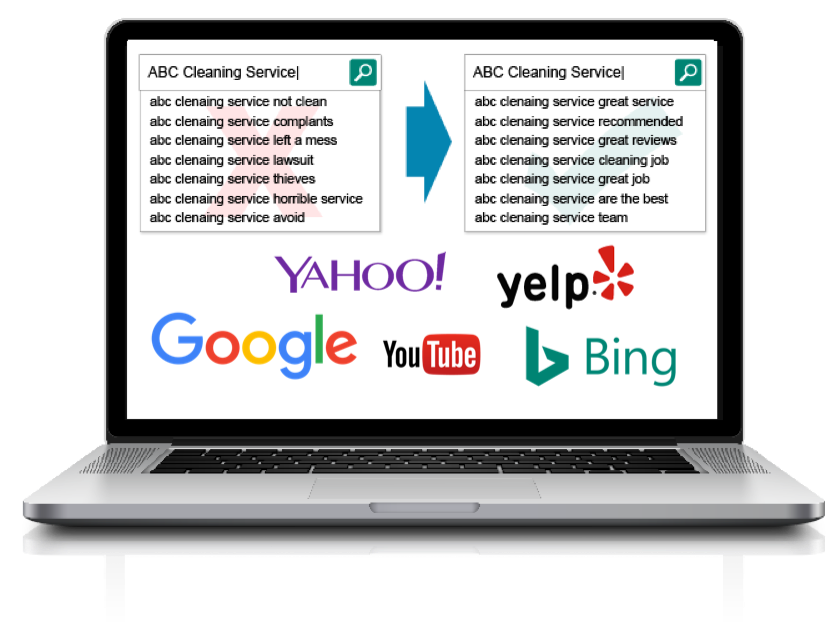Reputation Management Defined: Your In-Depth Guide To Reputation Management
The Value of a Good Reputation – Priceless
In business and in life, reputation is everything. A good reputation allows businesses and individuals alike to build a foundation of trust upon which they can build successful interactions with their public and target audience. Still, as valuable as it is, a good reputation sometimes takes years of consistent effort to build up and one wrong move to destroy if one does not have the right team in place to manage and positively influence the public perspective and narrative of an individual, business, project, or other entity.

Reputation Management Defined: What is Reputation Management?
Essentially, reputation management refers to the work done that is designed to create a particular image or brand narrative regarding the public perception of an entity. The work of reputation management is often done through an agency or business, but can also be handled by an individual or independent team of individuals. The key to effective reputation management is ensuring that the general public consensus is in line with the goals of the individual, company, project, or other entity whose reputation is on the line. Unsurprisingly, the goal of reputation management is to steer the general consensus in a positive direction.
Reputation Management in a Technology-driven Age
Modern technological developments – in particular, the Internet and other Internet-based or related technologies – have significantly impacted the way we do business and the way we live our lives. Prominent features of technology and the Internet that is very prominent in both business and our personal lives is social media and blogs. Content consumed from these sources can ultimately shape perceptions about a brand or business. Consequently, reputation managers want to ensure that the right messages are being shared on these and other platforms.
Sometimes referred to as E-reputation management, reputation management in the 21st century can include monitoring digital news and content sources like public blogs, social media management, as well as public review sites. Public relations officers, social media managers, and customer services representatives who are able to interact with the public in a way that is a positive sell for the entity being represented all play a part in this regard.
How Reputation Can Be Leveraged For Better Business
Every business has goals and objectives they are trying to achieve in order to move forward profitably. Chances are, these goals and objectives cannot be met without the support of consumers and people within a given target segment. As such, it is important that businesses reach out to their respective target groups in a way that presents them and their products, services, and projects in a favorable light. There are three main steps that a reputation management organization will take to ensure that they achieve this for their business clients. We take a closer look at them below.
1. Get clear on the goals and objectives
As intimated above, one of the main goals of reputation management is ensuring that public persona and perceptions are in line with the outlined goals and objectives. As such, the very thing first thing that reputation management will include is the definition of the goals and objectives of the individual, company or business, project or initiative whose public image is on the line. Once these are clearly defined, one can begin to lay out a multi-faceted reputation management plan that can help move the entity’s goals and objectives forward.
2. Clean house
Sometimes the work of reputation management is about rebranding to get all moving parts to align as they should. Consequently, once the goals and objectives are clear, the next step is to remove anything from the public domain that is not in line with the established goals and objectives. This will give the reputation management team the clean slate needed to rebrand and take the business or entity in the right direction.
3. Design a working strategy
Finally, now that the goal and objectives have been established and the reputation management team has removed the counterproductive content from the public domain, the next step is creating an effective strategy. This strategy will be paramount in moving the business, brand, project, or individual forward with a strategy that recreates a public consensus aligned with the goals and objectives outlined in step one. This strategy will include a lot of moving parts and can include the input of a team of people – for example, a publicist, a social media manager, and customer services reps – each of which has their own role in making everything work together.
Reputation management Defined: The Balance Between Monitoring and Engagement
As intimated in the three steps above, effective reputation management will involve some monitoring as well as active engagement on the part of the reputation managers. On the Internet, content is currency, and this content is found primarily through search engines. As such, different arms of a reputation management team (like social media managers and public relations specialists) will be sure to post enough positive content in the right places so as to counter negative content and ensure that the positive content is what appears in search engines when the business, brand, or entity being represented is queried.
As far as monitoring goes, analytics can prove to be particularly useful. Through analytics, reputation managers can see what is being posted to the Internet about the brand, person, or business they are representing. This information can be used to determine the next steps in rectifying a negative situation or building on the positive that is already there.
Reputation Management Defined: Here’s What Reputation Management is Not
It is important to mention that while reputation management can be effective in helping to present a particular entity in the right light. The truth is, the best way to manage a reputation is to simply have a good one. As intimated above, a good reputation is built through consistent right behaviors. So, if a business sells a product, it is imperative on the business to ensure their product quality is high and that customer service is solid. This will go a long way in ensuring that the brand or business reputation is positive.
In such instances, reputation management only seeks to enhance what is already there. After all, it is not the role of reputation management to create a positive brand identity when the opposite is true. In fact, in an online marketplace that values independent customer reviews from actual customers, and customers who like to share their reviews and thoughts, there is simply no way to ‘fake it’. In instances where an entity has a really poor reputation, the best bet may be to start from scratch with a new brand and build a solid reputation from the ground up.




